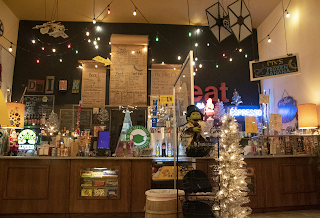Lynsey Addario Book Report
Lynsey Addario Book Report
One of my favorite things from this book that Addario expressed was when she got kidnapped. She was in Lybia when it was extremely dangerous in March 2011. It was the first time she was actually afraid for her life as in areas like Lybia or Afghanistan, the men are very respectful of women, but this time, she was being groped and felt up. Her male coworkers were getting the brunt of the abuse so she was a little relieved at that, but it was still a very dangerous situation for them all to be in. This whole chapter stood out to me because it was the first time she really feared for what would happen to her and her colleagues. What also stood out to me was that she mentioned how it had become normal for them to be in areas where danger was present, but it was at this moment when it was severe.
With Addario’s work, she really focuses on her subject and the story that goes along with it. Her work is more focused on conflict zones and human rights. Also, how women are affected in those areas as well. Something Addario does is really get to know her subjects, or try to. She wants them to be comfortable and she wants their story to be told. Once she gets this information, she tries to make it public or send it to a publisher and her editors as soon as she can. There are examples of her doing this throughout the book. She wants to show the world what is happening so people know.
Personally, I cannot relate to the sense of duty that Lynsey Addario feels when it comes to pursuing photojournalism in conflict zones. I do not want to place myself anywhere near harm's way. I can understand why she wants to go and show the world what is going on in these parts of the world. She cares about the people in these areas and she wants the world to know what is happening to the people. I understand that and I admire her for that. Especially since she is going to places where she could potentially die. I could never do something like that.
One of the lessons I learned from this book was to just go for it. If there is an opportunity, take it. Take what you can get and try your best. In the beginning chapters when Addario talks about first starting out, she didn’t really have any experience. There was someone who mentored her and who showed her the ropes but for the most part, she just jumped straight into photojournalism. The funny thing is, is that she didn’t even want to become a journalist at first, she just really liked taking photos. For me, when there was an opportunity to talk to someone or to get their photo, I took it. Or tried to, for the most part. It’s definitely something I struggle with, but I did try my best by just trying to go for it and to take the shot.
This is one of the photos from Chapter 7: Women are Casualties of Their Birthplace. Unfortunately, I don’t have any physical copies of the book so I cannot say what page this is on, however, I can say that it is the ninth photo in this chapter. I really like this photo just because of how Addario captured Kahindo and her children. The angle is also really good. There’s something about how they all look out the window and how they are all sitting on the bed together. The photo is lovely, but the caption that was with this photo was really heartbreaking. Another photo that I really like is the very first photo in Chapter 7. It is a photo of a woman cooking some kind of food, but what really stands out to me is the lighting. You can tell the photo was taken at night so it has blue tones to it and then you have the fire that is the main centerpiece with the light reflecting off the woman. Also, the clouds and the sky look so beautiful in that photo.
Out of all the quotes in this book, the one that stood out to me was one that didn’t have to do with her work, but with her personal life. “The love between us was organically unconditional, allowing us to be ourselves, without any limitations. It reminded me of the love my family gave me. Suddenly, standing at that stupid Swedish party, I realized that Paul was different from any other man I had ever known” (Chapter 8). This was something that really made me happy because all this time, throughout her whole career, she never thought she would find someone who would feel the same and stay with her. She needed that normalcy when her whole career had been in conflict zones and constantly being put into danger.
I would definitely recommend this book to someone who is interested in photojournalism or someone that just really likes reading books like this. How she became a photojournalist is really inspiring, especially since she started from not knowing anything. Her ambition to get out in the world is so admirable. The things that she has been through are so rousing and you feel like you can’t put the book down. There are some emotional parts in the book that just really make you feel something. It is genuinely such a good book if you are interested in thrilling stories about becoming a photojournalist and the things that they have been through.


Comments
Post a Comment